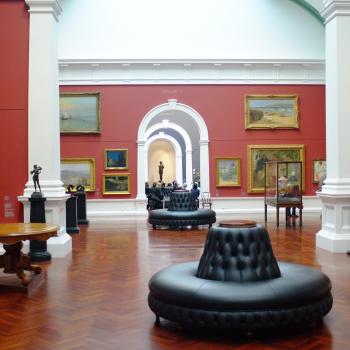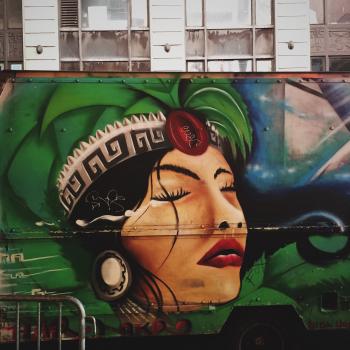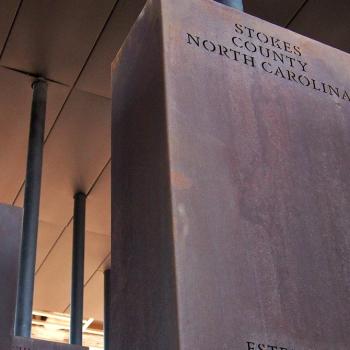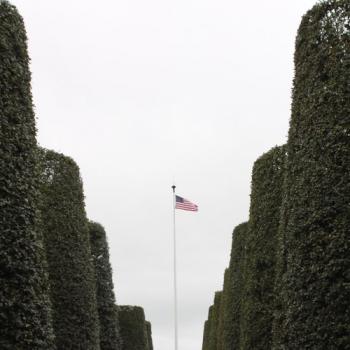 I read my friend Dyana’s Art House America essay about her brother “definitely going to prison, and probably for a long time,” and the air went out of my chest. The fear and anger and helplessness were so heavy, almost palpable. I had to turn away from the essay a couple of times during the reading and just look at nothing and breathe.
I read my friend Dyana’s Art House America essay about her brother “definitely going to prison, and probably for a long time,” and the air went out of my chest. The fear and anger and helplessness were so heavy, almost palpable. I had to turn away from the essay a couple of times during the reading and just look at nothing and breathe.
Sweet quirky Dyana. Her brother. No.
I remember the long shuttle ride from an MFA residency to the airport I took with Dyana several years ago during which she told me about her brother: he was in some trouble, but he was a good kid and she loved him. “I think you guys would like each other,” she said to me. I thought we probably would.
Now he is in prison, probably for a very long time. Dyana has occasionally lashed out angrily at the system, for making her brother feel like less than a human being, for making her and her family feel helpless before a massive, Kafkaesque justice system. I see her posts, and I too get angry.
The circles in which I move these days are full of academics, people who are of as much interest to the local police as the trees lining Rivermont Avenue. If I do a mental checklist of my friends and acquaintances, I cannot think of a single person who has been locked up. The corrections system isn’t something that comes up much.
Only days after Dyana’s essay went live, my wife and I watched the documentary The House I Live In, an indictment of both the so-called War on Drugs and the for-profit prison system. Among other things, the movie argues persuasively that the war on drugs is not primarily about drugs at all, but is a powerful machine for controlling minorities and the poor.
One of many examples supporting the movie’s argument: the mandatory minimum sentence for possession of crack cocaine was until recently one hundred times the minimum sentence for pure powder cocaine. That is, if someone was arrested with one ounce of crack the judge was compelled by law to give him the same sentence that a person busted with one hundred ounces of powder cocaine would get.
The difference between them? Crack is not as pure or as potent—oh, and poor blacks were the ones getting busted with it; wealthy whites had the good stuff, the powder. This ridiculous disparity has been challenged and addressed; the sentencing gap has gone from one hundred to one down to eighteen to one.
This is not about drugs. This is about who is being locked up, and why, and for how long. In the words of Mark Jenkins, writing for NPR, “The country’s incarceration industry has become a self-sustaining force, predicated on economics rather than justice.”
Incarceration industry, he calls it. Yes, it is an industry, and business is booming. The maker of this documentary visits a trade show and goes from booth to booth—people hawk the newest restraint chair, stun gun, marksmanship-training video-games.
The United States has 5% of the world’s population, but 25% of its prisoners. This has only been the case since harsher sentencing in the seventies; from 1970 to 2009, the percentage of human beings locked up in the Unites States went up 772%. Is it because crime has spiked in the same way? No.
Guess who makes up this 772% increase. Minorities and the poor.
Do you know that private prisons are quite lucrative? They are paid to keep human beings locked away, and the more they lock away the more they get paid—some state and local governments even have agreed to pay incarceration companies for every bed they fail to arrest someone to fill, creating a de-facto quota system—police are sent out like vacuum salesmen to fill these beds. Is it any wonder that these companies lobby to keep the draconian mandatory minimum sentences?
Oh, these companies also manufacture goods for the market, using all that free slave labor. It’s a sweet deal.
When I think about it, I am furious. Are these human beings guilty? If you mean, have they broken some law, then, yes, most of them have—non-violent offenders damaging themselves (why not imprison the alcoholic? the gambling addict?). And their sentences are arbitrarily and shockingly harsh because of the class and race of the typical offender.
And just this past week, in class we read and discussed “A Very Old Man With Enormous Wings: A Tale For Children,” and I see what I’ve always known is there, but haven’t spent as much time with as other elements of the story. Why is the man locked away? He is odd, unfamiliar, and he possesses attributes that are potentially threatening—oh, and because they can earn money from his imprisonment. Pelayo, an officer of the criminal justice system, chooses not to club the poor old man to death, but to lock him away and use him for profit. He can do it because he is the one with power in the relationship: he carries the bailiff’s club.
Many in our swelling prisons are doing long hard time for the crime of being poor. It isn’t because the system has failed them either; the system is doing just what is was designed by the wealthy and the powerful to do.
Human beings with power are putting human beings without power into a prison grinder, and they are scooping up the cash that flows out the other side. As usual, they are blaming these conditions on the powerless. We call it the Justice System.










